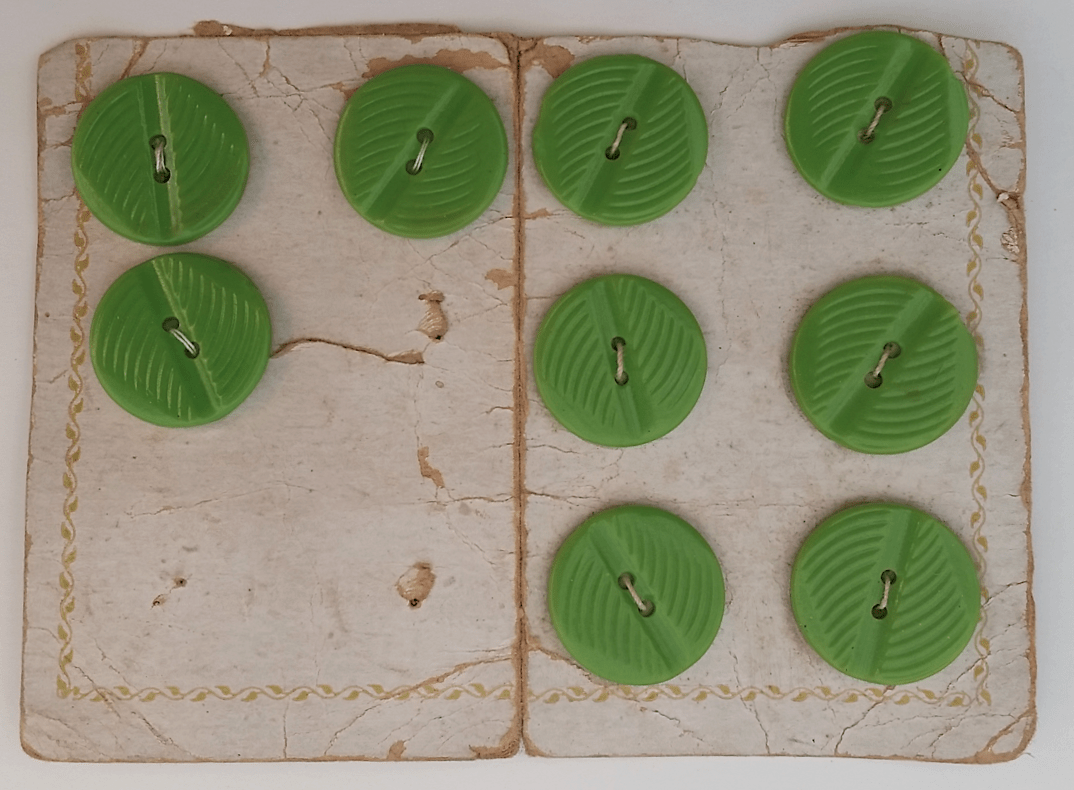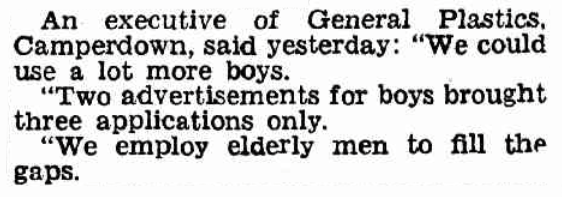General Plastics
GP were best known for their brands ‘Beauclaire’ from 1950-1957, then ‘Leda’ from 1957 onwards. However, prior to that the firm (and the form’s predecessors Herrman Co. then O. C. Rheuben & Co.) had multiple artwork and branding for their buttons. For more on the branding, see http://www.austbuttonhistory.com/australian-button-history/federation-to-ww2/general-plastics-beauclaire/#Branding_on_cards
One detail that I presume dates back to Herrman Company, (due to the large ‘H’ at the top of the relevant cards) had a decorative border of vine with leaves. This border was used intermittently on cards throughout the 1930-40s. New examples are seen below:


Buttons advertised for sale in Australian newspapers were being described as iron-proof and boil-proof from 1946 onwards, which dates the “plastic buttons” above to 1946-1949.

Pingelly-Brookton Leader (WA), 4th July 1946 page 5.
An interesting tid-bit from 1946. There must have been a generalised shortage of labour in the market post war, with over 27,000 men killed, a similar number wounded, and another approximately 7500 dying as POWs. Companies were employing men, including the “elderly” (up to 70 years) and married women (even if only part time) as they could not get enough ‘boys’ and ‘girls’. They felt that raising the school leaving age to 15 years and increasing the education of girls (they were “being taught to shun factory work”. Shame!) were to blame. However, the low wages may have had more to do with it! Juniors earned about half of the adult rate. Boys were looking to earn £3-4 instead of less than £2. Can’t say I blamed them.


The Daily Telegraph (Sydney), 11th August 1946 page 16.
For any questions, comments or contributions, please use the Contact page.
